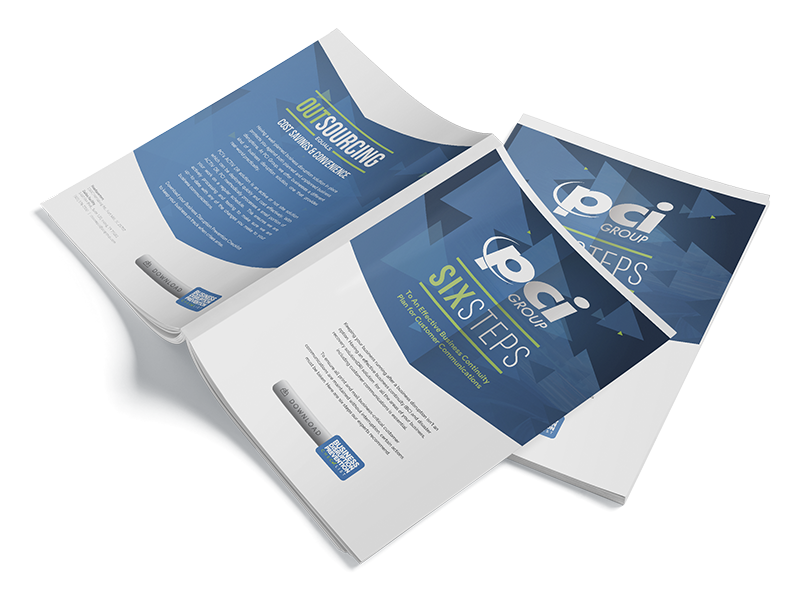
Errors happen. Nothing is completely perfect all the time. But, when it comes to compliance, there’s little room for error. In customer communications, containing confidential customer data, classified as PII (personally identifiable information), compliance needs to be as close 100% as possible. Many vendors in the customer communication industry promote a 99.6% accuracy rate, with some claiming to be as high as 99.8%. At first glance, these error rates seem almost perfect. But looking at this rating across all communications, how accurate is it really?
Volume and Accuracy
The industry average for accuracy is 99.6% or an error rate of .04%, which sounds impressive before you take a closer look. When you examine the numbers more closely, that error rate is actually quite alarming. For example, if the provider produces a monthly average of one million mailings per month, a 96.4% accuracy rating equates to 36,000 errors. Suddenly, that rating doesn’t look so good. And if 99.6% is the average accuracy rating, what about the production runs that fall below?
The Truth About Customer Communication Error Rates
In thinking about errors on a granular level, there are several types of errors that occur in customer communication printing. Some are more serious than others. Consider this, what if you opened a bill or statement and found that the address was correct, but it wasn’t your information?
In the wrong hands, this information could be a serious problem and a breach of regulations or compliance requirements. If you regularly encounter high numbers of errors, you could expect to see a long list of plaintiffs in a class action lawsuit. But even a small error may have serious consequences.
Outside of delivering the wrong PPI, other errors include wrong addresses. Incorrect addresses mean returned mail, wasted postage and delays in payment. Without proper checks and balances and the appropriate address management tools, you could be wasting money and restricting your cash flow. The U.S. Postal Service uses Intelligent Mail Barcodes (IMB) to sort and track letters. If you have a platform to tap into this data, you can data scrub before each run and turn bad addresses into correct ones.
Human Error Is a Leading Cause of Disaster
Yes, humans are often their own worst enemy when it comes to disaster. This can range from tripping over a power cable to a typo in the code. Of the latter, one such incident caused a massive outage of one of the world’s largest brands. Could a simple typo wipe out your files? It’s possible, so it’s prudent to always have plans in place to deal with or correct human error. Imagine all the possibilities of human error in printing and mailing. Although, much of the actions are automated, human interaction is still necessary. How many opportunities do workers have every day to sink your system? And, if so, what is the protocol to keep the error from compounding?
Takeaway: Humans are human after all. They make mistakes. Having a clear policy on what to do post-human error in your disaster recovery plan is critical.
Ransomware: Threats Inside and Out
Cyberattacks are becoming more prevalent every day, with a company being hit with an attack every 40 seconds. It’s very easy for hackers to create their own ransomware, fueling its growth. No industry is immune. There are attacks on every vertical. And don’t think large companies are immune because of their protocols. Actually, 25% of businesses impacted by ransomware have over 1,000 employees.
Ransomware isn’t merely an outsider threat, insiders also can initiate it. An anecdote from the industry presents the story of a terminated IT professional. He issued a threat to his former employer that he would expose all their data files to everyone if he wasn’t paid $1 million. Luckily, other employees were able to find the backdoor he had created and repaired the vulnerability. This incident revealed how unprepared the company was in relation to insider threats and resulted in major changes to their business continuity plan.
You should always keep in mind that the data used in your customer communications is considered personally identifiable information (PII). It may include names, addresses, account numbers, Social Security numbers, or other data. This information has to be protected from breaches. Many hackers would love the chance to access this information. It can fetch a high dollar on the dark web.
So, in the event that you have an internal or external ransomware attack, be sure that your business continuity plan includes steps to handle the matter securely and compliantly.
Takeaway: Your customer data must be protected from both inside and outside threats. Your disaster recovery plan should include what to do if there is a breach.
Cautionary Tales Shine Light on Necessity of Solid Business Continuity Plan
These are cautionary tales, most of which recovery was eventually possible. However, many experienced excessive downtime, lost productivity, incurred costs, and suffered other harm. Your customer communication disaster recovery plan should account for so many different situations. Because of this, it’s bound to have some vulnerabilities. If you want to avoid these horror stories, start by downloading the PCI Group 6 Steps To Business Continuity. It’s a great tool to ensure you’re prepared for anything.
Other errors that occur include fiduciary document like checks. If you owe a customer a refund or rebate, and they receive an incorrect check, they are likely to be unhappy. Then you have to deal with stopping payment on one check and reissuing a correct one.
No error is a good error. Errors cause breaches, unhappy customers, and wasted budget dollars. Now technology offers a solution. There are systems and processes, including the use of camera and scanning technology that prevents this from occurring. With these tools, there is also a chain of custody, so if your customer reports an error, you have the ability to validate it.
The Industry Leader in Accuracy (99.9999%): PCI Group
At PCI, we’re not only accurate, but we are consistently accurate. The following metrics describe the annual volume we produce for our clients:


Our leading industry accuracy is 99.9999%. That’s one error per every million, which is extraordinary. We aren’t resting on this achievement. We’re always improving our systems and processes. With advanced technology that delivers smart workflows, trust us to provide security and speed as well as accuracy. There’s no compromise. Fewer errors also mean better compliance and lower costs. Get in touch today to learn more about how PCI delivers the best accuracy in the industry.


